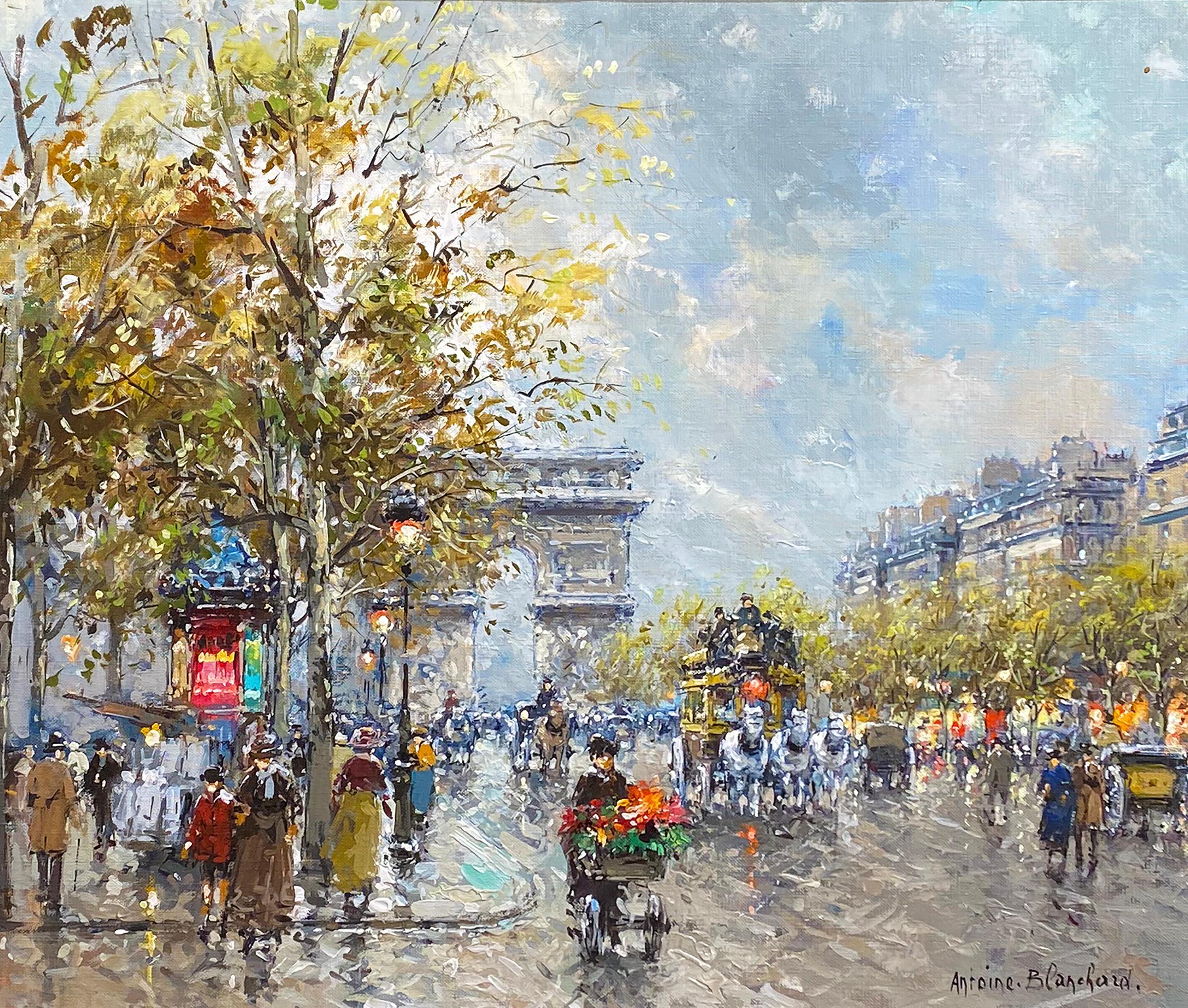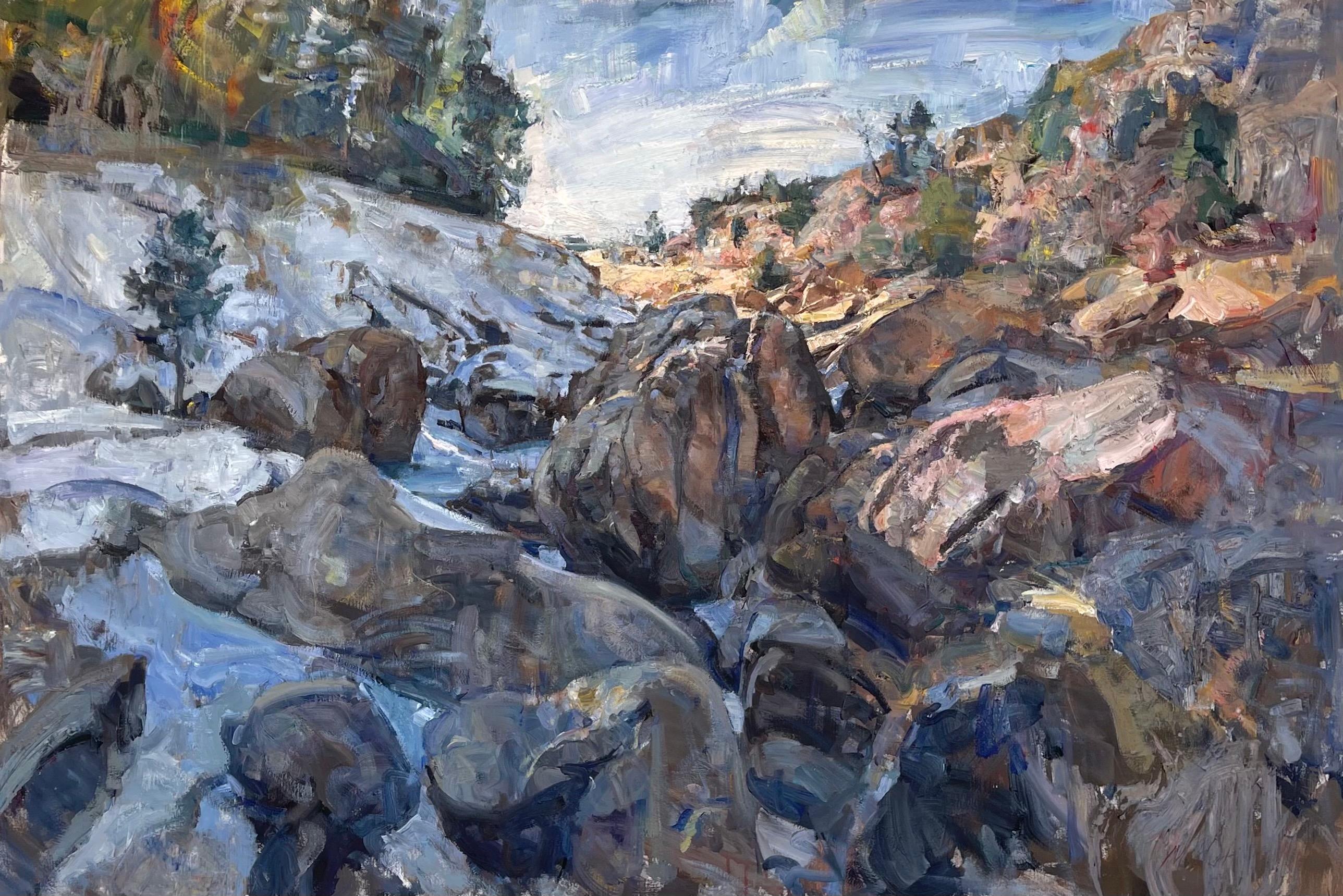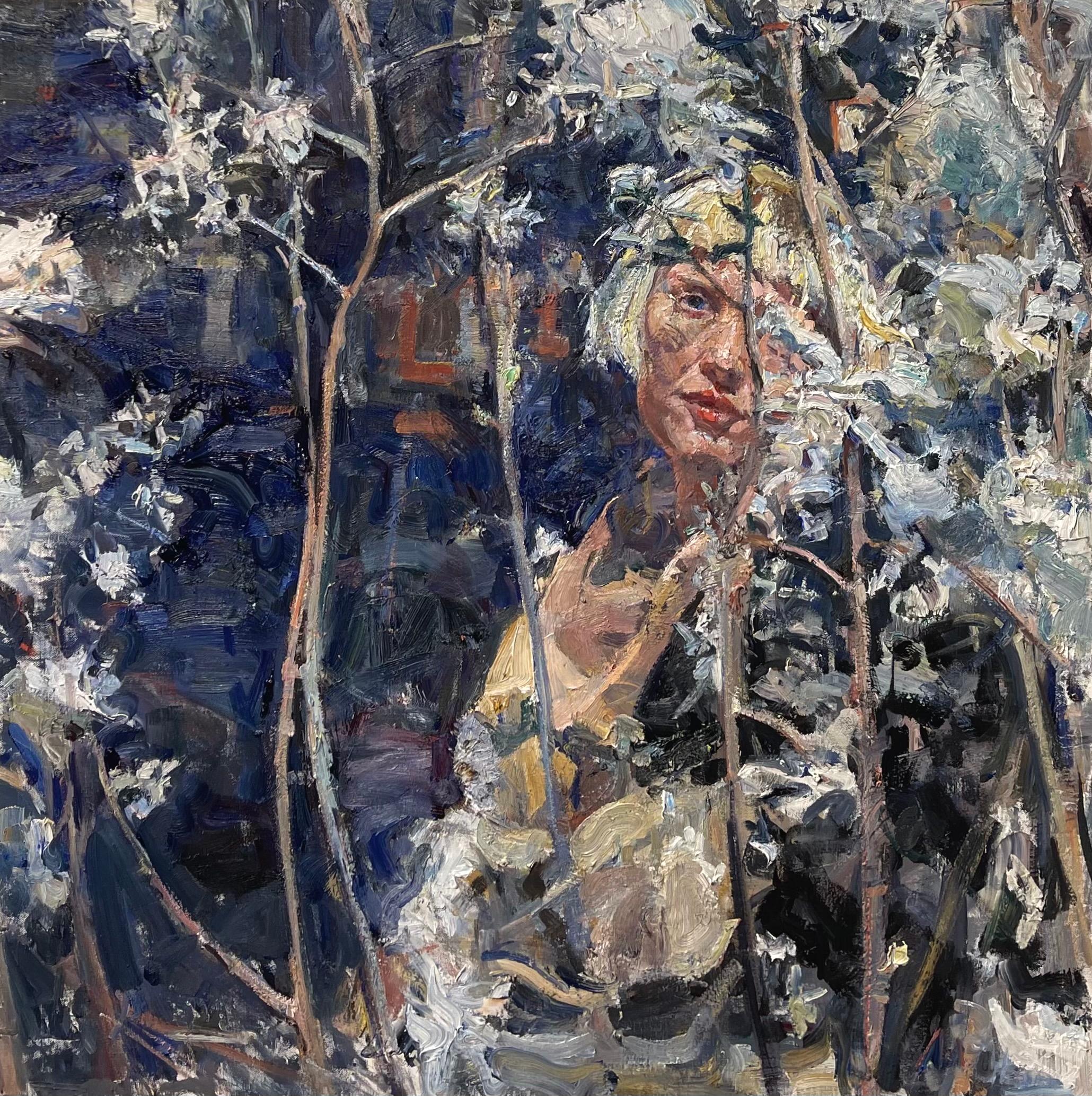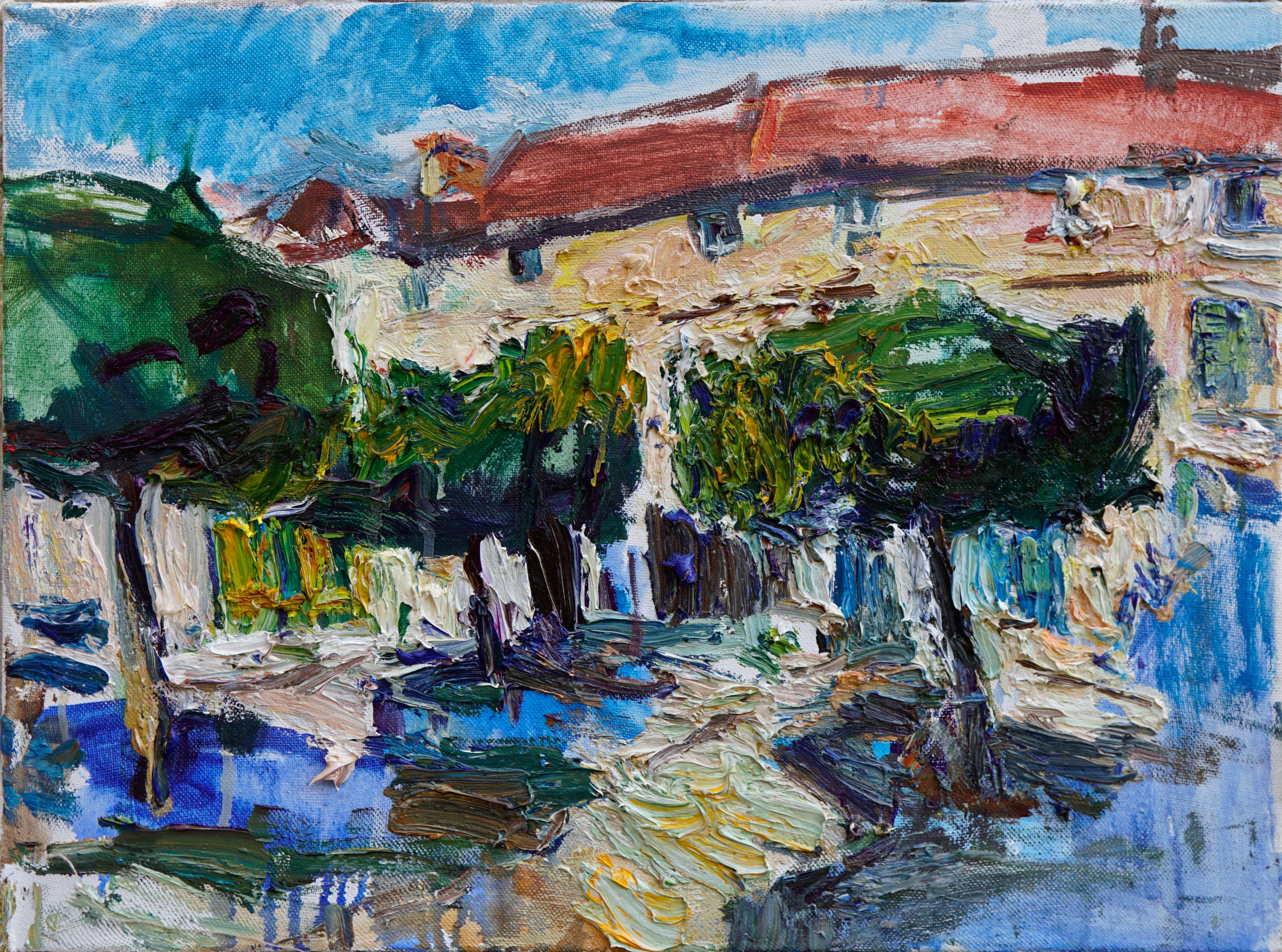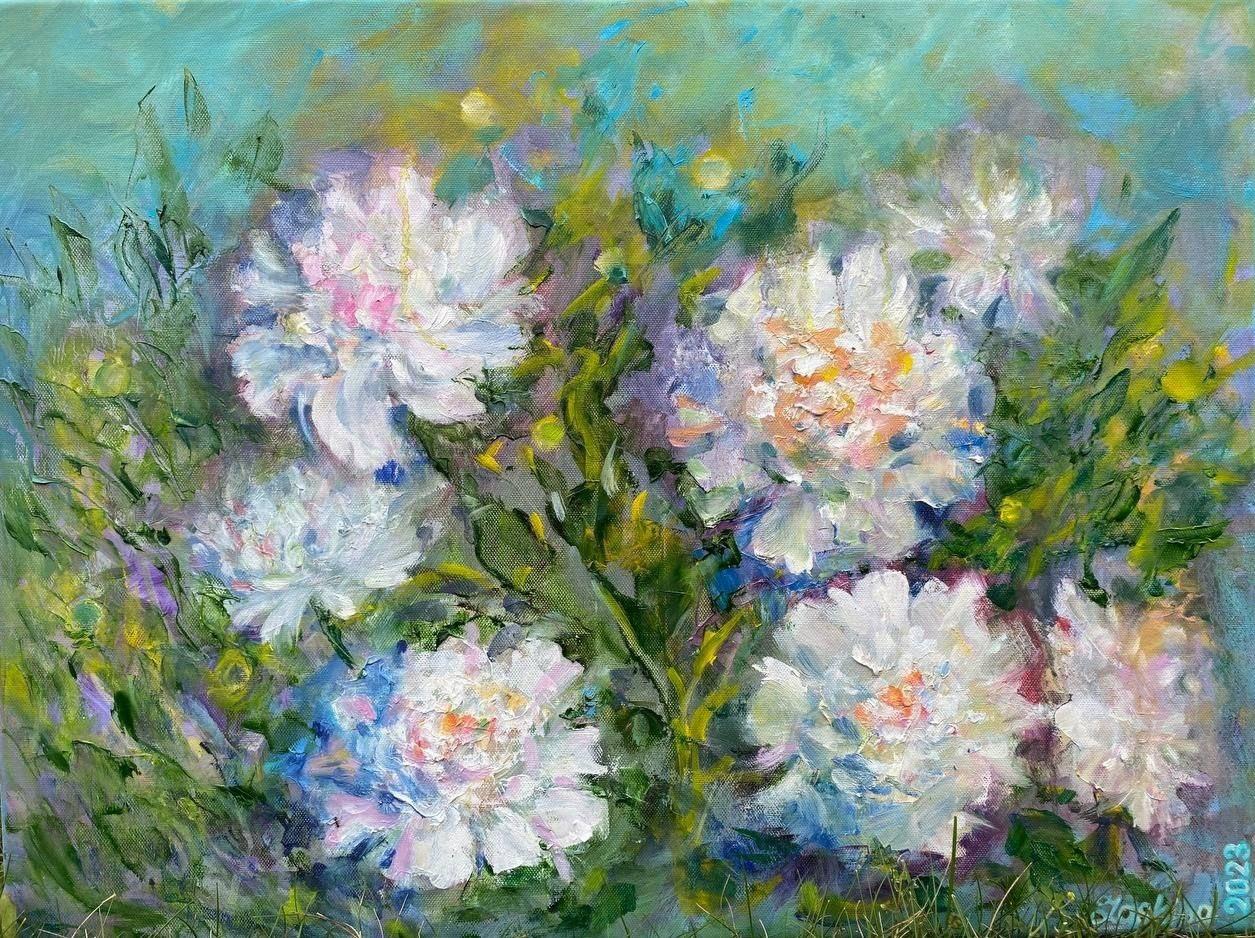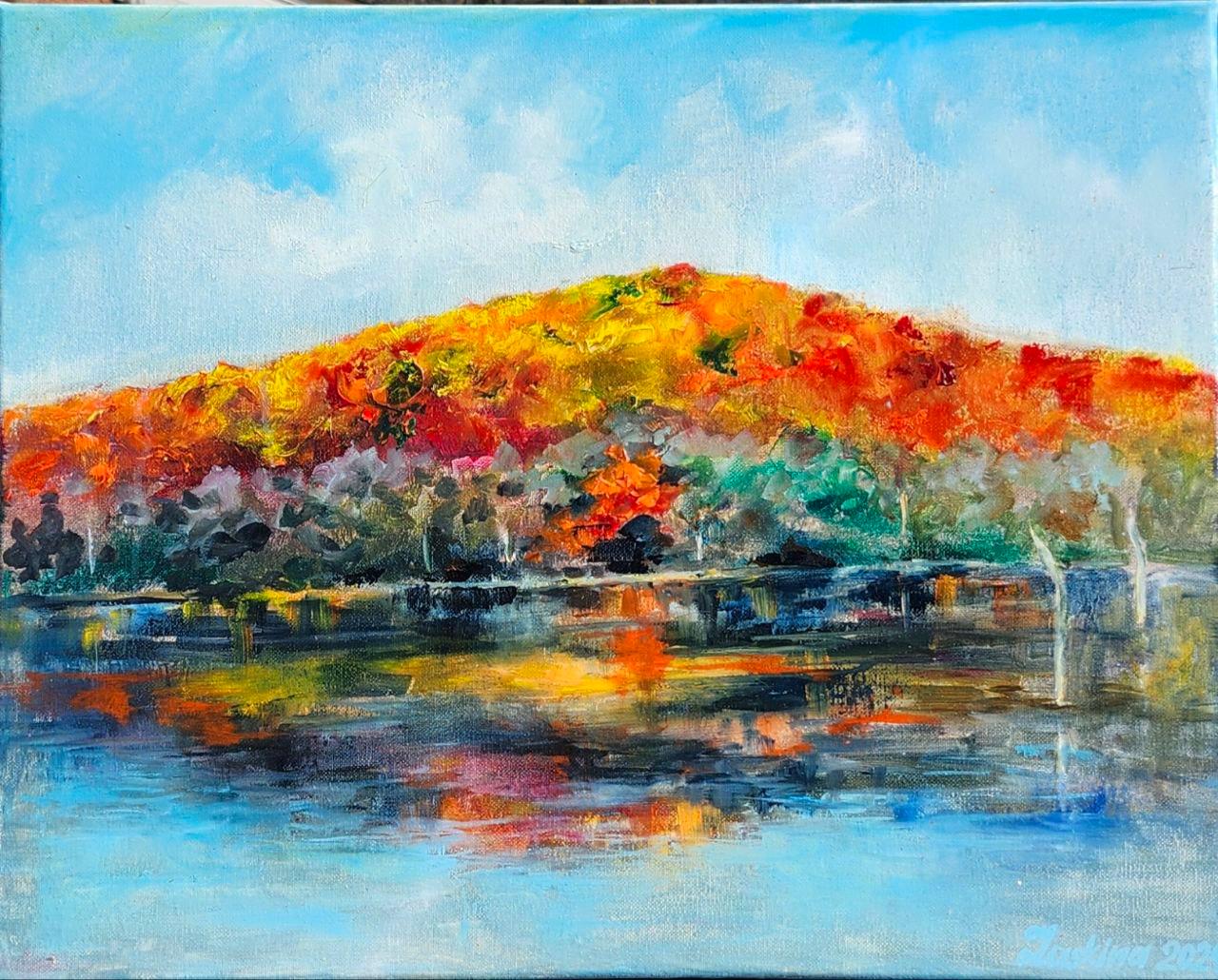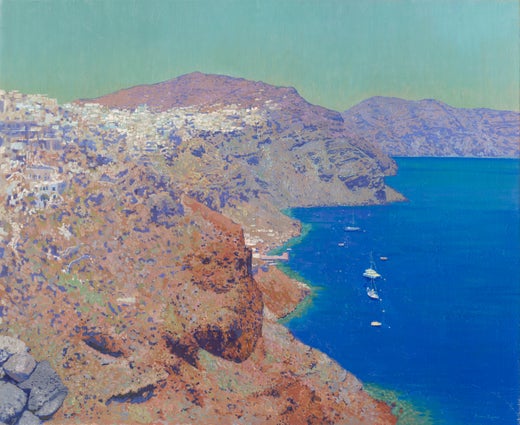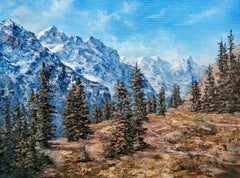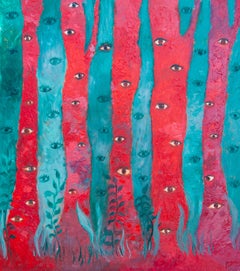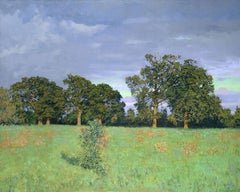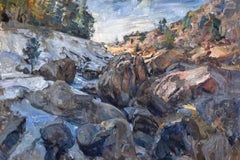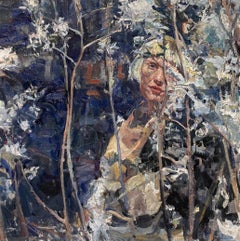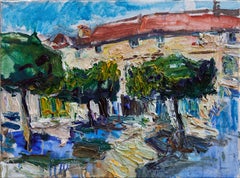Items Similar to Garitsa Bay, Original Oil Painting by Simon Kozhin
Video Loading
Want more images or videos?
Request additional images or videos from the seller
1 of 24
Simon KozhinGaritsa Bay, Original Oil Painting by Simon Kozhin2019
2019
About the Item
On one of the infrequent cloudy summer days, I went to Kerkyra and walked along the picturesque shores of Garitsa Bay, from where views of Ionian Sea and old Venetian fort of Corfu town. In such a consecration, the colors become more saturated, and a lot emphasizes the textures of the Old Fortress.
Exhibibition:
2024 The exhibition "Tail-wind". Museum and exhibition complex "Academy of Watercolor and Fine Arts of Sergey Andriaka". (Moscow)
- Creator:Simon Kozhin (1979, Russian)
- Creation Year:2019
- Dimensions:Height: 19.69 in (50 cm)Width: 23.63 in (60 cm)Depth: 0.79 in (2 cm)
- Medium:
- Movement & Style:
- Period:
- Condition:
- Gallery Location:Zofingen, CH
- Reference Number:1stDibs: LU2203213392232
Simon Kozhin
Committed to the Russian realistic school, graduate of the Russian Academy of Painting, Sculpture and Architecture, he aspires for absolute fidelity in reproducing the reality. 1988/90 A student of the art school in Krasnaya Presnya district of Moscow.1990/97 A student of Moscow Academic Art Lyceum attached to the Russian Academy of Arts, Moscow. His graduation drawings were illustrations for Academician Platonov's The Course of Russian History rated as “excellent". As a result, Kozhin was attested as having finished a full course of general and professional education.1997/03 A student of Ilya Glazunov's Academy of Painting, Sculpture and Architecture, Moscow. Selected exhibitions: 2001 Exhibition hall in Haddenham, Buckinghamshire, UK. Exhibition at the Christian ecumenical youth conference: “I am with you always, even unto the end of the world" (Mt.28:20). Christianity. in the third millennium, held in the conference room of the Central House of Tourists, Moscow.2002 Exhibition in the Central House of Artists, Moscow2009 Exhibition at the Game of Imagination Gallery in the Press Centre of the Izvestiya Publishing House, Moscow. 2011/12 “ Visible Images", exhibition at the exhibition hall of the Russian Auction House in Gostiny Dvor, Moscow. 2012 Exhibition at URALSIB | Bank 121, Moscow. “Dedicated to the 200th anniversary of the victory in the 1812 Patriotic War", exhibition mounted at the Izmailovo Gallery State Exhibition hall, Moscow.
2013 Exhibition at URALSIB | Bank 121, Moscow. Exhibition at the Gazprom Central office, Moscow2015 Exhibition at URALSIB» Private Bank | Bank121 (Moscow). 2015 "The artist's palette. Simon Kozhin. History and Modernity "at the Exhibition Hall" Atrium "The Moscow State Integrated Art and Historical Architectural and Natural Landscape Museum-Reserve" Kolomenskoye ". (Moscow) 2017 The exhibition "Enchanted by the Sea". Gallery "House of Music". (Kaluga) 2018 Exhibition "In Search of Color". Plyos State Historical-Architectural and Art Museum-Reserve. "Museum of the landscape". (Plyos)
About the Seller
5.0
Platinum Seller
Premium sellers with a 4.7+ rating and 24-hour response times
Established in 2019
1stDibs seller since 2022
512 sales on 1stDibs
Typical response time: 5 hours
- ShippingRetrieving quote...Shipping from: Moscow, Russian Federation
- Return Policy
Authenticity Guarantee
In the unlikely event there’s an issue with an item’s authenticity, contact us within 1 year for a full refund. DetailsMoney-Back Guarantee
If your item is not as described, is damaged in transit, or does not arrive, contact us within 7 days for a full refund. Details24-Hour Cancellation
You have a 24-hour grace period in which to reconsider your purchase, with no questions asked.Vetted Professional Sellers
Our world-class sellers must adhere to strict standards for service and quality, maintaining the integrity of our listings.Price-Match Guarantee
If you find that a seller listed the same item for a lower price elsewhere, we’ll match it.Trusted Global Delivery
Our best-in-class carrier network provides specialized shipping options worldwide, including custom delivery.More From This Seller
View AllSnow peaks - Oil Painting Landscape with Mountain Valley
Located in Zofingen, AG
Sunday hikes are a cherished tradition when you live in a mountainous region. The trail may be challenging, but the reward is worth it— the chance to take in the sight of snow-capped...
Category
2010s Impressionist Landscape Paintings
Materials
Canvas, Oil
MAGICAL FOREST
Located in Zofingen, AG
ABOUT THE ARTWORK
"Magical Forest" is an artwork that brings the mystique of nature to life through playful color and form. Shades of red and green interweave to create a dense thic...
Category
2010s Impressionist Interior Paintings
Materials
Canvas, Oil
GARDENS GUESTS
Located in Zofingen, AG
ABOUT THE ARTWORK
"GARDENS GUESTS" captures the tranquil essence of a mystical encounter within a secluded grove. Angelic figures with wings suggest a celestial visitation to the ear...
Category
2010s Impressionist Landscape Paintings
Materials
Canvas, Oil
$884 Sale Price
20% Off
Oaks-Trees in Haddenham
By Simon Kozhin
Located in Zofingen, AG
I chose the motive for painting this in a field near the village of Haddenham (UK). When I came to write this place I saw that the grass was very "short cut" on the field, only the t...
Category
Early 2000s Impressionist Landscape Paintings
Materials
Canvas, Oil
$16,753 Sale Price
20% Off
Landscape Painting, Impasto Modern Art, canvas, oil - 40x20in (100*50cm)
Located in Zofingen, AG
ABOUT THE ARTWORK
Titled "Coastal Vigil," this landscape painting is a richly textured embodiment of serenity and timeless grace. The impasto technique creates a tactile, dynamic su...
Category
2010s Impressionist Figurative Paintings
Materials
Canvas, Oil
$1,041 Sale Price
19% Off
Free Shipping
Angel Painting - SECRET GARDEN, oil on canvas - 40*34in (100*85cm)
Located in Zofingen, AG
ABOUT THE ARTWORK
"Angel Painting - Secret Garden" is a serene depiction of tranquility and hidden beauty. A graceful figure with delicate wings, clothed in a rich, stands contempla...
Category
2010s Impressionist Interior Paintings
Materials
Canvas, Oil
$749 Sale Price
19% Off
You May Also Like
Avenue des Champs-Elysses, Paris
By Antoine Blanchard
Located in Missouri, MO
Antoine Blanchard (French 1910-1988)
"Avenue des Champs-Elysses, Paris"
Oil on Canvas
Signed
approx 18 x 22 (site)
approx 26.5 x 30 (framed)
Antoine Blanchard (c.1910-1988) was a prolific and successful Neo-Impressionist painter who specialized in nostalgic scenes of Fin de Siècle Paris. Inspired by the subjects as well as the success of earlier painters of Parisian life like E. Galien Laloue (1854-1941), Edouard Cortès (1882-1969), Jean Béraud (1849-1935) and Luigi Loir (1845-1916), Blanchard painted hundreds of views of the “City of Light.” In the late 1950s, his street scenes were exported to the United States and the United Kingdom, where they were sold briskly to collectors. By the1960s, Blanchard paintings were bringing several hundred dollars in galleries, so while they were not inexpensive, they were affordable to collectors who loved Parisian scenes but who could not afford the works of Cortes or one of the other French painters known for their views of Paris in Belle Époque. Eventually Blanchard’s more delicate, feathery pastel-toned scenes of rain-swept Paris became sought after in their own right and, when he died, he was considered the last of what the dealers described as the École de Paris or “School of Paris” painters.
The most salient fact about the life and career of the painter Antoine Blanchard was that he was actually born Marcel Masson, the son of a furniture maker who lived in the scenic Loire Valley, south of Paris, where the French nobility had their chateaus. The date that is usually given for Blanchard’s birth is November 15, 1910. However, there has been some speculation that he was born even later, perhaps in 1918, but some of the facts of his life have always been clouded by early biographies that claimed even earlier dates for his birth, so that he would seem to be seen as a contemporary of the famous Belle Époque painters rather than a post-war interpreter of Paris.
Blanchard grew up in the hardscrabble years following the First World War. Because he was artistically talented, he was sent first to the nearby city of Blois, the capital of the Loir-et-Cher Département, for artistic training and then to the École des Beaux-Arts in Rennes, on the Brittany peninsula, where he received a classical art education. By some accounts Blanchard also studied in Paris, where the historic École des Beaux-Arts is located, but the depth of his study and the style of his earliest work will require further research.
Marcel Masson was married in 1939, as war clouds gathered on the French horizon. He was drafted for service in the French Army and participated in the short and futile struggle against the invading German Panzers before returning to his family and his art during the Nazi occupation. A daughter, Nicole, was born in 1944 with a second daughter, Eveline, who eventually came to the United States, following in 1946.
Masson’s early art career was interrupted, first by World War II and later by the necessity of keeping his father’s workshop running in the years after his death. By the late 1940s, though, Masson returned to his art and moved to Paris in order to further his career.
Exactly when Marcel Masson adopted the pseudonym Antoine Blanchard is not known, nor are we aware of his motivations for adopting a nom de plume, but the practice was not unusual for French painters. In most cases a pseudonym was adopted because the artist had contractual obligations with more than one agent or dealer. Another motivation could be to obscure the scope of a sizable artistic production. Dealers in that era also liked to keep an artist under their thumb, so a pseudonym was a way for Blanchard’s dealers to tuck him away, out of the sight of their competitors.
Like many painters before him Masson may have initially painted different subjects under different names. Marcel Masson neé Blanchard would have been well aware that the famous and prolific French painter E. Galien Laloue (1854-1941) painted under no less than four names – three pseudonyms in addition to name he was christened with – and so the adoption of another name was probably not seen as a liability to him.
However, he apparently never took the step to register his pseudonym, which was possible in France, to legally restrict its use. In any event, by the 1950s Marcel Masson had become “Antoine Blanchard,” a painter of Parisian views. With the aging Edouard Cortès (1882-1969) as a model, Blanchard began to specialize in romanticized scenes of la ville des lumières, or the “City of Light.”
However, instead of painting contemporary Paris, the crowded metropolis of his own time, which he may have felt was lacking in romance, he chose to look at the French capital through the rear-view mirror. So Blanchard became known for his depictions of the hurly-burly life of Paris in the Belle Époque. For inspiration, he is said to have collected old sepia-toned postcards of life in La Belle Époque (“The Beautiul Era”), the long period of peace and relative prosperity between the end of the Franco-Prussian War and the horrors of the Paris Commune in 1871 and the start of the mass bloodshed of the First World War in August of 1914. In addition, however, the paintings of Loir, Baraud, Laloue and Cortès could be found and studied in the flea markets of Paris as well as the auctions at the l’Hôtel Drouot.
Reminders of the Belle Epoch were thus all around Blanchard, and of course the architecture that he painted had survived the Second World War intact, because Paris was spared bombing or a siege by the allies. Soon he was painting the horse-drawn omnibuses that took turn-of-the-century Parisians on longer trips throughout the city as well as the tradesmen, children and fashionably dressed ladies that populated Baron Haussmann’s Grand Boulevards.
Blanchard’s early work was clearly modeled after the paintings of Edouard Cortès, but he was always his own man and never a slavish copyist. These paintings were darker in palette than the later Blanchard paintings most American collectors have become familiar with, and his red and blue tones were often bolder than those of Cortès. He never adopted the heavy “impasto,” the build-up of paint on the highlights of Cortes’ work, leaving that artistic trademark to the master. Blanchard’s brushwork was painterly, but the buildings in the paintings were always well rendered, for he had an excellent command of composition and perspective.
By the late 1950s, agents began to purchase Blanchard’s paintings and then to export them to the United States, selling them to commercial galleries in far away Houston, Los Angeles, San Francisco, Chicago and New York. By the early 1960s, his work was already well known enough to be in reproduced by print publishers and the Donald Art Company published a number of popular prints that are now often mistaken for original paintings. By the end of the 1960s, Blanchard had begun to develop his own mature style by employing a lighter, brighter, palette and a deft, almost calligraphic style of brushwork. This helped him step out of Cortès’ shadow and become a sought-after painter in his own right. Blanchard worked through agents, essentially brokers, who purchased his work and created a demand for it in the United States and Canada.
By the 1970s Blanchard’s paintings were being sold by galleries across the United States, and the American market absorbed virtually all of his work. In 1969, with the passing of Edouard Cortès, he became the last of the long series of prolific French painters of Parisian life. Blanchard’s later works were usually daylight scenes, with Paris seen awash in rain or with a mantle of soft snow, and so collectors no longer confused him with Cortes, whose Parisian clock seemed to always be set at twilight. These paintings were rendered in softer, pastel tones and he used his brush with a light touch. These qualities gave Blanchard’s work of the 1970s and 1980s a lighter, more decorative appearance.
In the late 1970s, the French agent Paul Larde published a lavish book that was claimed to be an authorized biography of Antoine Blanchard by his “exclusive” dealer. Today, this book is almost impossible to find, because it was apparently the subject of a lawsuit in France. Some of the information in the Larde book was contested and found to be inaccurate and so it was withdrawn from publication.
One claim that Larde made was that Blanchard’s production was extremely limited. While he was not as prolific as Cortès or Laloue, he was a hard-working painter who managed to supply a long list of galleries with his work. He produced thousands of paintings during his career. When the motivation for a monograph is marketing rather than art history, accuracy and detail can be swept aside by exaggeration, hyperbole and claims of exclusivity that were meant to discourage collectors or galleries from buying Blanchard’s from other representatives. Blanchard’s legitimate paintings were sold by several agents, who dealt directly with the artist, at least one of whom was American, one Austrian and a few French dealers.
The details of Antoine Blanchard’s life are not well known because he never sought the limelight. He was content to work in his studio and ship his paintings to his agents who sold them abroad. Eventually both his daughters – Nicole and Evelyn – followed in his footsteps and became painters themselves. Evelyn (1946-2008) was savvy enough to adopt the Blanchard nom de plume, and she began painting street scenes that closely resembled her father’s later work.
Antoine Blanchard passed away in 1988, leaving hundreds of paintings of Belle Époque Paris– the Notre Dame Cathedral, the Opera, the Arc de Triomphe and Place Concorde – as his lasting legacy.
Notes on the Authentication of Antoine Blanchard’s Paintings:
The vast majority of Blanchard’s paintings were smaller works, which were sent to the United States in tubes and stretched and framed by the galleries that sold them. Virtually all of these Blanchards were painted in European centimeter sizes, which convert to 13” x 18” or 18” x 21 1/2?, but on very rare occasions he painted much larger works in American sizes – such as 24” x 36” – on commission for dealers such as Howard Morseburg in Los Angeles or the dapper Wally Findlay, who had a chain of galleries. The first way to assess the authenticity of a Blanchard...
Category
Mid-20th Century Impressionist Landscape Paintings
Materials
Canvas, Oil
Price Upon Request
"Castle Wood Canyon, " Oil Painting
By Mikael Olson
Located in Denver, CO
Mikael Olson's (US based) "Castle Wood Canyon" is an original, handmade oil painting that depicts a valley dotted with boulders and cool blue snow surrounded with towering pine trees...
Category
2010s Impressionist Landscape Paintings
Materials
Canvas, Oil
"In the Flowers, " Oil Painting
By Mikael Olson
Located in Denver, CO
Mikael Olson's (US based) "In the Flowers" is an original, handmade oil painting that depicts a feminine face peeking from behind wild flower blooms as they weave across the canvas.
Category
2010s Impressionist Portrait Paintings
Materials
Oil, Canvas
"The Central Square of Ravières" Oil painting
By Ulrich Gleiter
Located in Denver, CO
Ulrich Gleiter's (EUR based) "The Central Square of Ravières" is an oil painting that depicts a square of a small European city filled with trees and li...
Category
2010s Impressionist Landscape Paintings
Materials
Canvas, Oil
"White peonies"
Located in Edinburgh, GB
This still life is painted in the power of impressionism. Spectacular strokes of a palette knife and brush create three-dimensional execution. This picture will always make you happy.
Category
21st Century and Contemporary Impressionist Still-life Paintings
Materials
Canvas, Oil
"Autumn Rhapsody"
Located in Edinburgh, GB
Autumn Rhapsody. My painting was done in Gatineau Park in Ottawa. This is a wonderful park and incredibly beautiful places. In autumn, the park turns into a fabulously beautiful plac...
Category
21st Century and Contemporary Impressionist Landscape Paintings
Materials
Canvas, Oil
Recently Viewed
View AllMore Ways To Browse
Antique Indian Club
Helen Harrison
John Hughes
Margaret Thomas
Marine Battle
Original Paintings Wild Horses
Peter Brook
Robert Avery
Vintage Western Oil Paintings
Yellowstone National Park
1950s Desert Painting
Avenue Road
Bell Board
Betty Rose
British Institute Of Florence
British Wild Flowers Art
Church Dome
Colony 13
